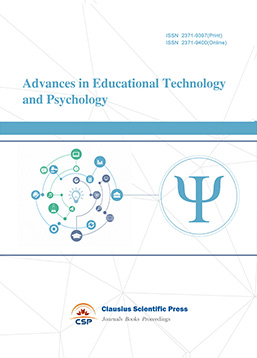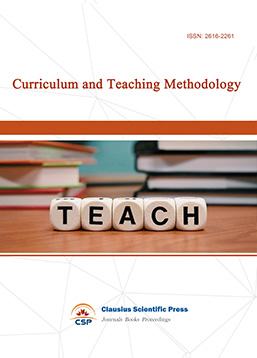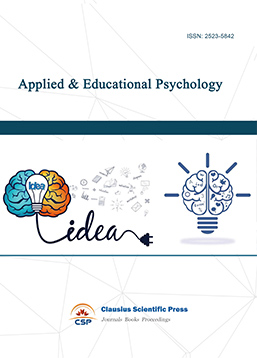Online and Offline Hybrid Teaching Mode of the Course "Architectural Model Design and Production"
DOI: 10.23977/trance.2024.060602 | Downloads: 21 | Views: 906
Author(s)
Shengwen Chen 1
Affiliation(s)
1 School of Construction, Guangdong Technology College, Zhaoqing, Guangdong, 526100, China
Corresponding Author
Shengwen ChenABSTRACT
In view of the problems of disconnection between theory and practice, insufficient student innovation ability and weak teamwork training in traditional architectural model design and production courses, an online and offline hybrid teaching mode is introduced to comprehensively improve students' professional quality and comprehensive ability by integrating theoretical learning and practical training. First, through the analysis of student needs, the teaching objectives are determined and the course structure is constructed. The course content is divided into three modules: theoretical learning, skill training, and creative design application, laying the foundation for the integration of teaching content. Then, the online part sets up video courses, operation guidance and discussion areas, covering the basic concepts of model design, tool operation and case analysis, providing students with independent learning resources; the offline part focuses on group training and practical operation. Students are divided into groups to design and make models, and complete the whole process from conception to finished product under the guidance of teachers. Finally, through the seamless connection between online tests and offline training, a closed-loop feedback mechanism is formed. The offline teaching content is adjusted every week according to the online test results, and the students' learning progress is continuously evaluated through phased project assessments to ensure the in-depth integration of theory and practice. Compared with the traditional teaching mode, students in the hybrid teaching group performed better in the final test, project creativity score and teamwork score. The average score of the hybrid teaching group in the division of labor clarity was 8.8, while the average score of the traditional teaching group was only 6.4. This paper provides a new teaching path for future architectural education, and also provides a teaching model that can be used as a reference for other practical courses.
KEYWORDS
"Architectural Model Design and Production" Course, Online and Offline Hybrid Teaching, Project Creativity, Teamwork AbilityCITE THIS PAPER
Shengwen Chen, Online and Offline Hybrid Teaching Mode of the Course "Architectural Model Design and Production". Transactions on Comparative Education (2024) Vol. 6: 11-21. DOI: http://dx.doi.org/10.23977/trance.2024.060602.
REFERENCES
[1] Si Duo, Zhang Jin, Wei Rui, et al. Promoting learning through competition: On the cultivation of architectural model making and performance ability from the perspective of subject competition [J]. Teaching Method Innovation and Practice, 2021, 4(10): 119-122.
[2] Sa Ying, Wang Xiaoyun, Li Zhiying, et al. Teaching of basic architectural design courses based on the idea of architectural heritage protection [J]. Higher Architectural Education, 2021, 30(4): 101-108.
[3] Yang Lili, Hua Guanqing, Huang Haijing. Innovative reform of university design experimental courses based on the OBE concept: Taking the teaching reform of architectural model experiments as an example [J]. Higher Architectural Education, 2023, 32(4): 95-102.
[4] Ibrahim A F, Attia A S, Asma'M B, et al. Evaluation of the online teaching of architectural design and basic design courses case study: College of Architecture at JUST, Jordan[J]. Ain Shams Engineering Journal, 2021, 12(2): 2345-2353.
[5] Asadpour A. Student challenges in online architectural design courses in Iran during the COVID-19 pandemic[J]. E-learning and Digital Media, 2021, 18(6): 511-529.
[6] Chan C S, Bogdanovic J, Kalivarapu V. Applying immersive virtual reality for remote teaching architectural history[J]. Education and Information Technologies, 2022, 27(3): 4365-4397.
[7] Varma A, Jafri M S. COVID-19 responsive teaching of undergraduate architecture programs in India: learnings for post-pandemic education[J]. Archnet-IJAR: International Journal of Architectural Research, 2020, 15(1): 189-202.
[8] Seyman Guray T, Kismet B. Applicability of a digitalization model based on augmented reality for building construction education in architecture[J]. Construction Innovation, 2023, 23(1): 193-212.
[9] Javohir S, Omina K, Gulnoz X, et al. Enhancing Architectural Education: Innovative Approaches in Teaching Architectural Sciences[J]. HOLDERS OF REASON, 2024, 4(1): 90-94.
[10] Wang Y. A comprehensive evaluation system of teaching quality based on big data architecture[J]. International Journal of Continuing Engineering Education and Life Long Learning, 2020, 30(2): 176-189.
[11] Mamajonova N, Oydin M, Usmonali T, et al. The Role of Computer Graphics in the Teaching of Architecture and Construction Drawing[J]. HOLDERS OF REASON, 2024, 2(1): 359-368.
[12] Matusik A. Role of teamwork formulas in educating Bachelor of Science graduates in architecture[J]. World Transactions on Engineering and Technology Education, 2020, 18(3): 324-329.
[13] Glinsky J V, Ilha J, Xiong, Yuan Gomez, Guillermo Rostagnor, StephanMartin-Manjarres, SorayaTranter, KeiraMuldoon, StephenWeerts, EricHarvey, Lisa A.The 2022 Massive Open Online Course (MOOC) to train physiotherapists in the management of people with spinal cord injuries: a qualitative and quantitative analysis of learners' experiences and its impact[J].Spinal cord: the official journal of the International Medical Society of Paraplegia, 2023, 61(11):615-623.
| Downloads: | 14278 |
|---|---|
| Visits: | 550778 |

 Download as PDF
Download as PDF



